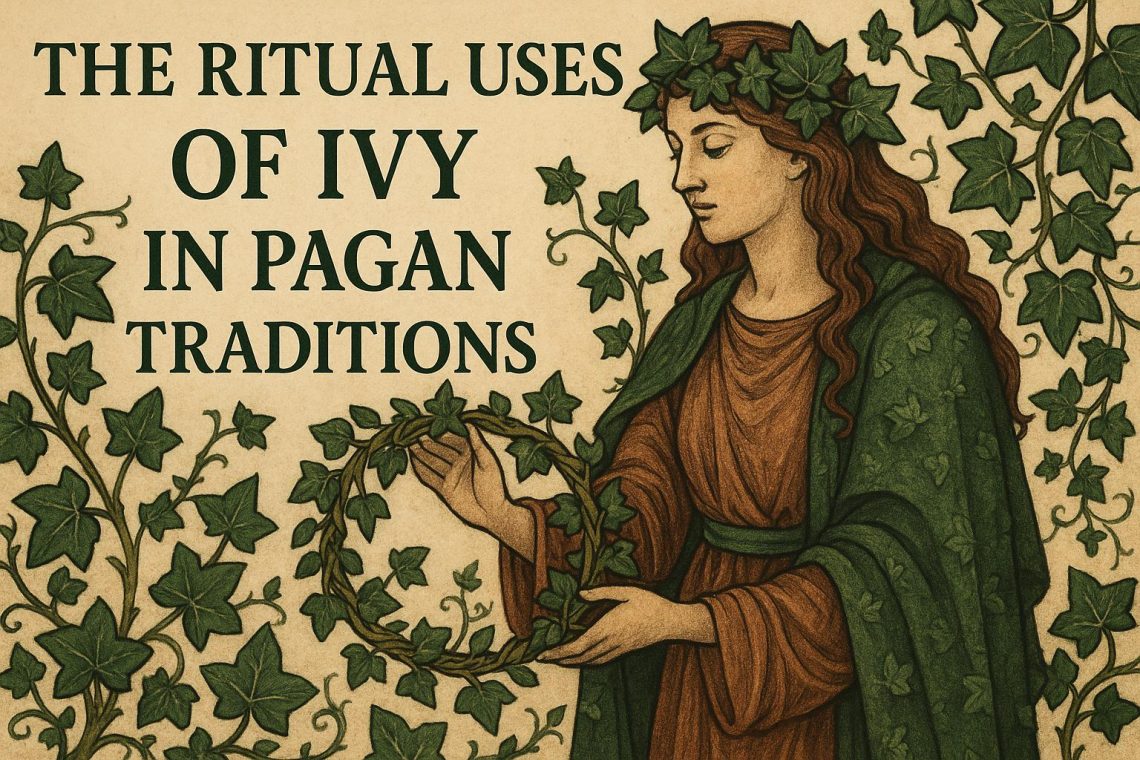Content:
The Symbolism of Ivy in Pagan Traditions
The rich tapestry of pagan traditions often imbues elements of the natural world with deep symbolic meaning, and ivy is no exception. Praised for its resilience and evergreen nature, ivy represents a myriad of spiritual and cultural concepts. Its ability to persist and remain lush throughout the seasons has led many ancient cultures to view it as a symbol of eternal life and resilience. Additionally, ivy’s tendency to cling and interweave symbolizes connections, friendships, and loyalty, which are essential to both personal and communal life in these spiritual traditions.
Ivy in Celtic Rituals
In the rich customs of the Celts, the use of plants as symbols reaches profound spiritual depths. Among these, ivy holds significant meaning. It is associated with the steadfastness of love and friendship, reflecting the enduring bonds that connect people. In some Druidic practices, ivy’s role expands further, serving as a poignant reminder of life’s cyclical nature. It encapsulates the intertwining of life and death and illustrates the perpetual balance between opposing forces. This dual nature is notably embodied in ivy’s light and dark leaves, which mirror the balance of light and darkness in human experience.
Use in Celebratory Ceremonies
Ivy’s significance comes to the forefront during specific seasonal festivals like Samhain and Beltane. These ceremonies mark the transition between seasons—times when nature’s cycles are most apparent. During these festivals, ivy is used to adorn altars and ceremonial spaces, serving as a powerful symbol of life’s continuity. Participants may craft ivy wreaths to wear or offer them as tokens of protection and goodwill. Through these acts, ivy signifies the themes of rebirth and renewal that are intrinsic to these celebrations.
Ivy in Women’s Mysteries
Within certain traditions that focus on women’s mysteries, ivy is elevated as a symbol of the feminine aspects of nature. It represents fertility, intuition, and protection—attributes that are central to many rites of passage and initiation ceremonies. In these contexts, ivy is used to connect practitioners with the divine feminine. Rituals often involve wrapping ivy around sacred objects or utilizing it to enhance meditative states, underlining the plant’s role in spiritual enlightenment and growth.
Modern Pagan Practices
Today, ivy maintains its symbolic significance in modern pagan practices. It is cherished for its qualities of protection and healing. Many contemporary practitioners include ivy in their homes or sacred spaces to invite positive energy while repelling negativity. The plant’s persistent growth is a poignant reminder of the importance of resilience and adaptability when facing challenges.
Integrating Ivy into Personal Rituals
On a personal level, individuals seeking protection or prosperity might incorporate ivy into rituals by creating charms or talismans. This often involves braiding ivy with other significant plants or symbols and placing them in strategic locations. The act of creating and placing these talismans is not just about the physical presence of ivy but involves an intentional engagement with its spiritual symbolism. Moreover, in some practices, ivy’s growth patterns are observed for divination purposes, offering insights into personal questions or concerns through its natural tendencies.
Further Exploration of Ivy in Pagan Traditions
For those intrigued by the ritual uses of ivy and its rich symbolism in pagan traditions, there is a wealth of resources available for more profound exploration. Various online platforms offer detailed insights into the multifaceted applications of ivy across different pagan paths. These resources can enhance understanding and provide a deeper connection to one’s spiritual journey.
Those interested in further readings and guides can benefit from visiting websites that focus on pagan plant lore and nature-inspired rituals. These sites can offer expanded knowledge of how ivy is used symbolically and practically within various spiritual practices, making it possible to harmonize it effectively with one’s personal beliefs and spiritual endeavors.
The relationship between humans and ivy is longstanding and multifaceted, a testament to the enduring presence of natural elements in shaping spiritual and cultural identities. Ivy, with its robust symbolism and historical significance, continues to enrich the practices and beliefs of those who cull wisdom from the rich tapestry of pagan traditions.
